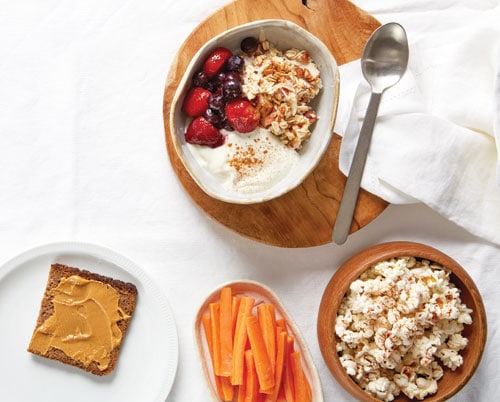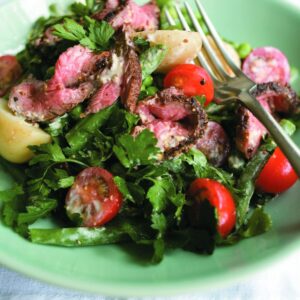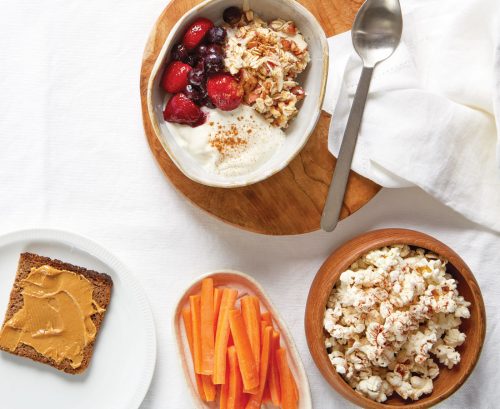
Editor-at-large Niki Bezzant shows us how simple it can be to ensure you get enough wholegrain foods in your daily meals.
Whole grains are something we often see in healthy eating guidelines, but they don’t get a lot of attention. Recent research and more focus on fibre has thrown these humble diet superstars back into the spotlight.
The Global Burden of Disease study published earlier this year in The Lancet found low intake of whole grains was one of the top dietary risk factors for death and disability-adjusted life-years (DALYs), responsible for around 3 million deaths globally in 2017.
This study used an optimal intake level of 100g-150g daily for whole grains, while average intakes in Australasia are only around 30g daily.
This was on top of another study led by Otago university researchers, also published in The Lancet. This study found a strong link between higher intakes of dietary fibre and wholegrain foods, and a reduction in the risk of a wide range of diseases. The researchers noted there was “convincing evidence” that replacing refined grains with whole grains has a protective effect on health.
A 2011 review published in the BMJ found higher intake of wholegrain cereals helped protect against colorectal cancer, one of our biggest killers. They found 90g of whole grains in a day lowered the relative risk for colorectal cancer by 17 per cent, with higher amounts being better. The diets they looked at contained between 61g-128g of whole grains a day.
So, what is a whole grain?
Technically speaking, it’s a grain that has all three of its parts intact — the endosperm, germ and bran. Whole grains have more fibre, protein and vitamins than refined grains, so they help us feel fuller for longer, provide more nutrients and give us greater health benefits than refined grains. There are lots of ways to get whole grains into your day, so think beyond bread and cereal to embrace their delicious, easy-to-cook and inexpensive goodness.
Here’s how we can include whole grains at every meal.
While we don’t have a specific recommended target for wholegrain intake, this shows we can easily beat the numbers talked about in the burden of disease study.
This 8700kJ day has around 470g whole grains.
Because we’ve taken every opportunity to include whole grains, this day is super high in fibre (52g). When increasing your fibre intake, it’s best to do it gradually and ensure you get plenty of water as well to help keep everything moving.
Breakfast
Bircher muesli or porridge
¹/³ cup wholegrain oats *
3 tablespoons nuts or seeds
1 apple, grated
½ cup trim milk
½ cup low-fat Greek yoghurt
¼ cup fresh or frozen berries
Snacks
- 1 slice dark whole rye bread*with peanut butter
- 1 cup carrot sticks
- 2 cups spiced popcorn*
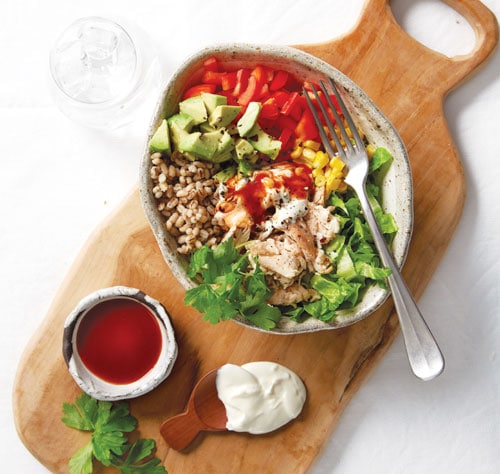
Lunch
Mexi bowl
1 cup cooked barley*
¼ cup sweetcorn kernels*
½ red capsicum, diced
1 cup shredded lettuce
¾ cup shredded cooked chicken
¼ avocado, sliced
1 tablespoon chipotle sauce
1 tablespoon low-fat plain
yoghurt or reduced-fat sour cream
Dinner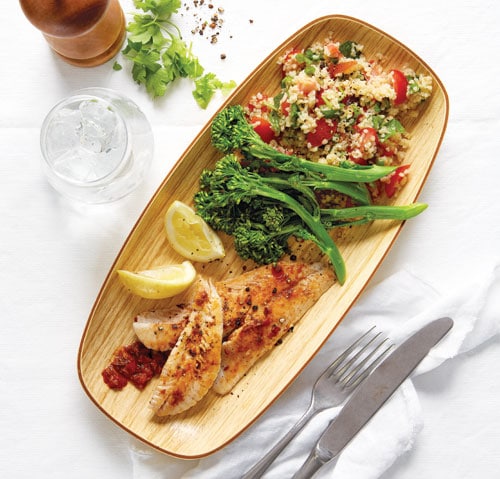
Harissa-spiced fish with tabouleh
Combine the below to make tabouleh:
1 cup cooked bulgur wheat *
¼ cup chopped fresh parsley
1 tomato, chopped
½ cup chopped fresh mint
1 lemon, juice and zest
1 tablespoon olive oil
Pan-fry or grill:
150g firm white fish
1 teaspoon harissa paste or curry paste
Serve with
4 stalks broccolini, or 2 cups broccoli florets
Some whole grains to try:
- barley
- brown rice*
- buckwheat*
- bulgur (cracked wheat)
- corn*
- freekeh
- millet*
- popcorn*
- quinoa*
- sorghum*
- spelt
- wholegrain bread
- wholegrain rye
- wholegrain couscous
- wholegrain oats
- wholegrain pasta
*gluten free
Article sources and references
- Aune D et al. 2011. Dietary fibre, whole grains, and risk of colorectal cancer: systematic review and dose-response metaanalysis of prospective studies. BMJ 343:d6617https://www.bmj.com/content/343/bmj.d6617
- GBD 2017 Diet collaborators. 2019. Health effects of dietary risks in 195 countries, 1990–2017: A systematic analysis for the Global Burden of Disease Study 2017. Lancet 393:P1958-72https://www.thelancet.com/journals/lancet/article/PIIS0140-6736(19)30041-8/fulltext
- Reynolds A et al. 2019. Carbohydrate quality and human health: a series of systematic reviews and meta-analyses. Lancet 393:434-5https://www.ncbi.nlm.nih.gov/pubmed/30638909
- World Cancer Research Fund and the American Institute for Cancer Research, wcrf.org Accessed July 2019https://www.wcrf.org/
www.healthyfood.com


